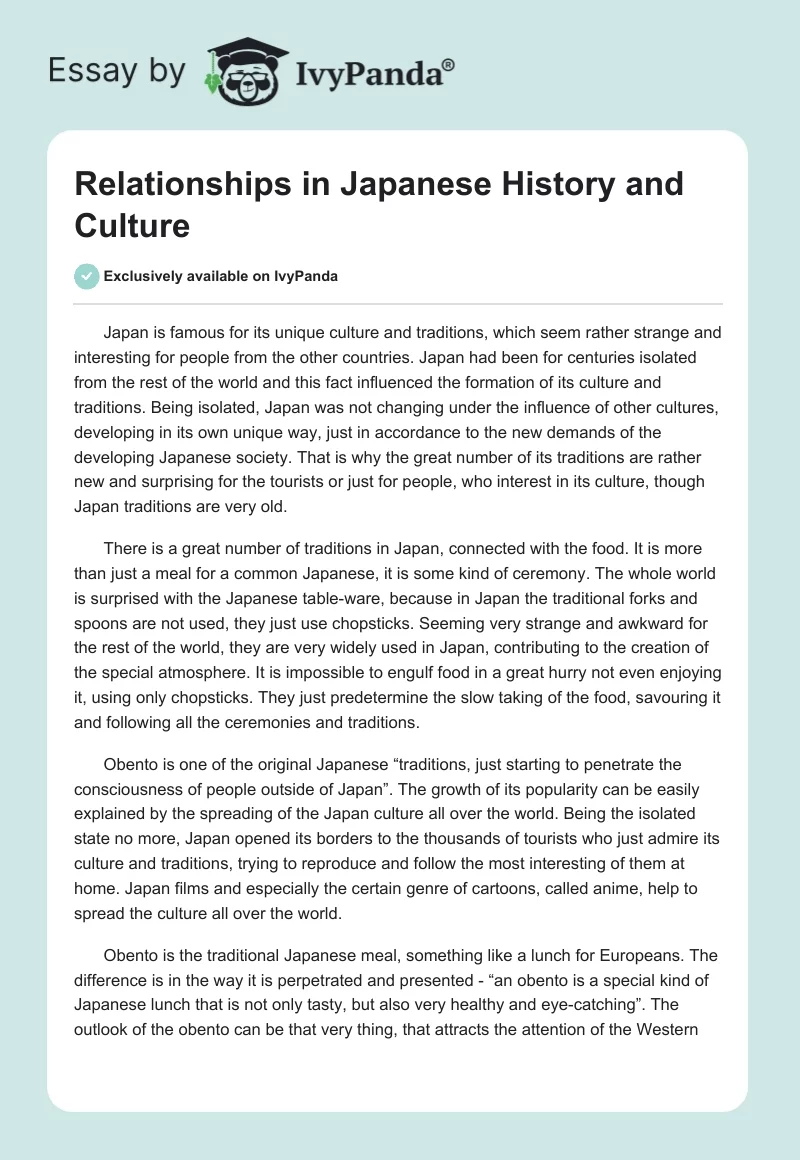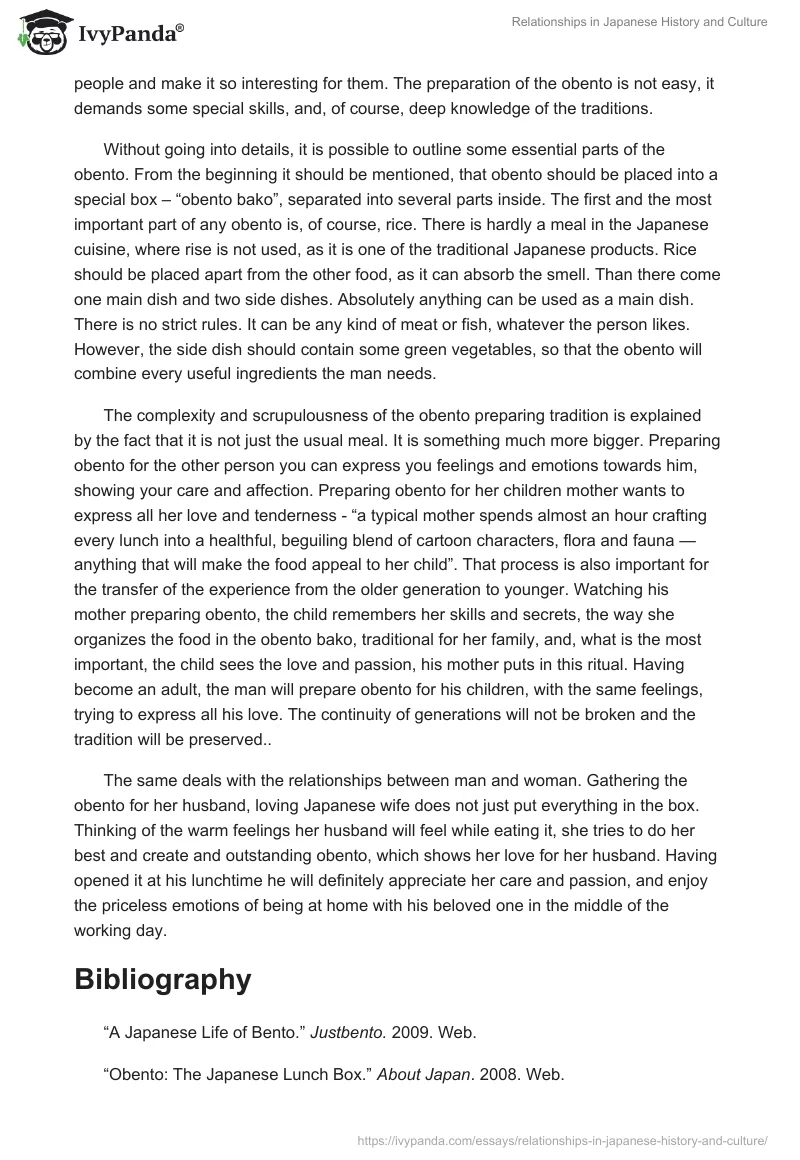Japan is famous for its unique culture and traditions, which seem rather strange and interesting for people from the other countries. Japan had been for centuries isolated from the rest of the world and this fact influenced the formation of its culture and traditions. Being isolated, Japan was not changing under the influence of other cultures, developing in its own unique way, just in accordance to the new demands of the developing Japanese society. That is why the great number of its traditions are rather new and surprising for the tourists or just for people, who interest in its culture, though Japan traditions are very old.
There is a great number of traditions in Japan, connected with the food. It is more than just a meal for a common Japanese, it is some kind of ceremony. The whole world is surprised with the Japanese table-ware, because in Japan the traditional forks and spoons are not used, they just use chopsticks. Seeming very strange and awkward for the rest of the world, they are very widely used in Japan, contributing to the creation of the special atmosphere. It is impossible to engulf food in a great hurry not even enjoying it, using only chopsticks. They just predetermine the slow taking of the food, savouring it and following all the ceremonies and traditions.
Obento is one of the original Japanese “traditions, just starting to penetrate the consciousness of people outside of Japan”. The growth of its popularity can be easily explained by the spreading of the Japan culture all over the world. Being the isolated state no more, Japan opened its borders to the thousands of tourists who just admire its culture and traditions, trying to reproduce and follow the most interesting of them at home. Japan films and especially the certain genre of cartoons, called anime, help to spread the culture all over the world.
Obento is the traditional Japanese meal, something like a lunch for Europeans. The difference is in the way it is perpetrated and presented – “an obento is a special kind of Japanese lunch that is not only tasty, but also very healthy and eye-catching”. The outlook of the obento can be that very thing, that attracts the attention of the Western people and make it so interesting for them. The preparation of the obento is not easy, it demands some special skills, and, of course, deep knowledge of the traditions.
Without going into details, it is possible to outline some essential parts of the obento. From the beginning it should be mentioned, that obento should be placed into a special box – “obento bako”, separated into several parts inside. The first and the most important part of any obento is, of course, rice. There is hardly a meal in the Japanese cuisine, where rise is not used, as it is one of the traditional Japanese products. Rice should be placed apart from the other food, as it can absorb the smell. Than there come one main dish and two side dishes. Absolutely anything can be used as a main dish. There is no strict rules. It can be any kind of meat or fish, whatever the person likes. However, the side dish should contain some green vegetables, so that the obento will combine every useful ingredients the man needs.
The complexity and scrupulousness of the obento preparing tradition is explained by the fact that it is not just the usual meal. It is something much more bigger. Preparing obento for the other person you can express you feelings and emotions towards him, showing your care and affection. Preparing obento for her children mother wants to express all her love and tenderness – “a typical mother spends almost an hour crafting every lunch into a healthful, beguiling blend of cartoon characters, flora and fauna — anything that will make the food appeal to her child”. That process is also important for the transfer of the experience from the older generation to younger. Watching his mother preparing obento, the child remembers her skills and secrets, the way she organizes the food in the obento bako, traditional for her family, and, what is the most important, the child sees the love and passion, his mother puts in this ritual. Having become an adult, the man will prepare obento for his children, with the same feelings, trying to express all his love. The continuity of generations will not be broken and the tradition will be preserved..
The same deals with the relationships between man and woman. Gathering the obento for her husband, loving Japanese wife does not just put everything in the box. Thinking of the warm feelings her husband will feel while eating it, she tries to do her best and create and outstanding obento, which shows her love for her husband. Having opened it at his lunchtime he will definitely appreciate her care and passion, and enjoy the priceless emotions of being at home with his beloved one in the middle of the working day.
Bibliography
“A Japanese Life of Bento.” Justbento. 2009. Web.
“Obento: The Japanese Lunch Box.” About Japan. 2008. Web.
“The Meaning of Food. Obento.” Public Broadcasting Service. 2014. Web.


